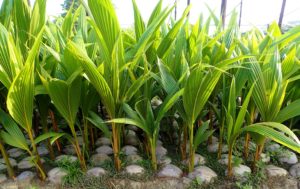Insight from International Entrepreneurs in Agriculture

Written by Michael DeSa, Wilfred Morren, and Monica Ganley
In the context of recent political turmoil and today’s uncertain economic times, many investors and entrepreneurs are seeking alternative investment options outside the U.S. as a way to add diversity and uncorrelated assets to their portfolios. Agriculture is one of the oldest asset classes in the world, time tested and proven to withstand economic uncertainty and volatility. In particular, multi-faceted and diverse agricultural investment opportunities in South America provide an assortment of alternative opportunities for a variety of investors.
To help shed light on this topic, Jacob Warwick, founder of ThinkWarwick Communications, recently interviewed three investment entrepreneurs and founders that specialize in South American agricultural markets. Michael DeSa, Monica Ganley, and Wilfred Morren, discuss how South American agriculture markets differ from the U.S. and where you should focus your efforts this year.
Agriculture as a Growing Asset Class
These experts believe agriculture in South America is a more stable, tangible alternative compared to low yielding bonds or overvalued, risky, and extremely volatile equity markets within the US.
Wilfred Morren, a Dutch native who has lived and worked in Uruguay for ten years, is the director of an investment brokerage firm called, Farmland Uruguay. He points out, “Farmland has historically proven itself as a tangible storage of wealth. In fact, the appreciation of farmland worldwide over the last 30 years is approximately 3.5 percent annually.”
Monica Ganley is the founder of Quarterra, a boutique strategy consultancy dedicated to providing clients insight into the Latin American food and agriculture industries—and the tools needed to unlock business opportunities in the region.
For Ganley, the fundamentals of agriculture as an asset class are the exciting aspect. She authenticates her belief in agriculture with facts. “With the global population expanding rapidly, the U.N. estimates a world population of almost 10 billion by 2050, enabling the development of a robust food system will be crucial to ensuring both a peaceful and prosperous global future.” She further solidifies this point by saying, “If there are any doubts about the relationship between food availability and geopolitical stability, look no further than the role hunger played in the Arab Spring.”
While it’s a near given that population will continue to compound over the foreseeable future, this doesn’t necessarily mean agriculture in the United States is a bad investment option; only that it may not prove the most lucrative investment opportunity.
Ganley adds, “There’s nothing wrong with agriculture in the United States, but I think because of the relative ‘ease’ of these transactions, there are a lot more people chasing the same opportunities.”
Michael DeSa is the founder of AGD Consulting, a US-based, veteran-owned advisory company offering consulting services and customized investment research trips to private and institutional investors. DeSa shares insight into the US market, “Research shows that from 2007 to 2012, nearly 3.5 million acres of rural land in the U.S. was converted to non-agricultural uses. During that same period, the average price per acre of U.S. farmland rose nearly 22 percent.”
It appears that while there are agricultural investment opportunities within the United States, their availability is shrinking and prices are increasing. Investors bold enough to diversify with an overseas investment can find plenty of untapped opportunities.
Opportunities in South American Agriculture
Both DeSa and Morren agree that South American agriculture has grown more attractive over the past several years. “It’s one of the few regions of the world that still has underdeveloped and underutilized farmland. The region is home to nearly 30 percent of the globe’s arable land and one third of its freshwater supply, speaking to its sustainability over time.”
Morren adds that for the past three decades, countries such as Uruguay have concentrated on establishing foreign investor-friendly business practices to draw more outside investment dollars. This means that securing a long-term investment partner is more obtainable for United States citizens that is has been in the past.
Ganley, a resident of Buenos Aires, agrees that investment opportunities are becoming increasingly accessible. “We have seen an important shift in Argentina’s attitude toward foreign investment. Since taking office in December 2015, president Macri has eliminated the parallel exchange rate and taken other measures to facilitate investment flowing into the country.”
With its sustainable water supply and untapped arable land, South American agriculture may be poised to support the world’s growing need for food; however, with the tremendous size and scope of the continent, these three experts believe the most value and upside potential is concentrated in the southern cone, primarily Argentina, Uruguay, and Paraguay.
DeSa acknowledges that while opportunities abound throughout the continent, “The south and central region has the most potential for future upside. In this region, you’ll find a stronger physical and legal infrastructure, a longer track record of strong foreign investor sentiment, and examples of a more stable geopolitical climate.”
DeSa’s sentiment on the region closely aligns with what Ganley has been seeing in Argentina, particularly within governance around the agriculture industry.
“The elimination of effective export taxes on corn and wheat have increased potential returns while the soy industry is benefitting from recent tariff reductions. In the Northern provinces, the government is aiding soy farmers by offering subsidies and transport initiatives.”
Argentina’s beef industry is also poised for growth as a result of the government removing export taxes imposed by the former administration.
Morren is seeing farmers in Uruguay play towards trends in the United States to increase investor interest.
“The climate and physical landscape (in Uruguay) are ideal for extensive cattle breeding and uniquely qualified to meet the increasing demand for grass-fed beef. Premium quality beef production is business as usual in Uruguay, with many of the animals bound for the U.S. having a rating of Never Ever III, which indicates that the animal has never received antibiotics, growth hormones, or proteins of animal origin.”
Morren adds that forestry in Uruguay has also been a strong sector, “Forestry started growing nearly 30 years ago when the government was able to attract large multinational investors such as Shell and UPM from Finland.” These major investments primed the Uruguayan economy with established pulp mills and processes that are designed for large scale operations.
Risks and Opportunities in South America Versus United States
DeSa, while not against investing in the United States, advises his clients about one very compelling differentiation between the two—farmland prices.
“A 2016 Iowa Land Value Survey found the average value of Iowa farmland was approximately $7,183 per acre. Compare that to the average price per acre of top quality, fertile land in Uruguay at $3,500 and these price points become hard to ignore.”
Morren agrees, “The strong growth potential offered by South American agriculture is hard to match in other parts of the world. Ideal climate, quantifiable soil productivity, and an immature agribusiness market creates opportunities that the U.S., as a fully developed market, can hardly present.”
While Ganley, a proponent of investing in South America, understands these opportunities, she also empathizes with North American investors. “When thinking about U.S. versus foreign farmland investments, the key difference is the risk profile an investor is willing to assume” she comments.
“An investment in South American agriculture could come with more risk, but in my opinion, these risks are becoming increasingly easy to understand and mitigate. Many investors are watching the region, especially in Argentina, and its shifting political climate with piqued interest. Investment opportunities here offer compelling fundamentals, but they won’t last forever.”
To minimize this risks, as with other investments, you need to be extremely thorough when researching opportunities in South America. DeSa, who has personally invested in the region twice, argues for due diligence and boots-on-the-ground experience.
“A picture is not worth a thousand words. In my experience, online photos or reports can over or undersell an asset’s potential. Find a company or expert to help you walk the ground, experience the local financial and agricultural culture, and build trustworthy relationships with managers and communities before investing.”
Ganley adds that the greatest risks revolve around politics, macroeconomics, and rule of law. “While there is little that can be done to manage political and macroeconomic risks, the wise investor fully assesses these environments, understands all possible scenarios, and makes the right tradeoff for themselves between potential risks and reward. It’s critical to understand a country’s legal framework in order to protect and insulate the investment as much as possible.”
Sound legal assistance is an absolute must.
“The right representative can provide you with advice concerning titling issues, cultural differences, and connect you with governmental agencies to apply for special investment regimes,” comments Morren.
“Possible investors should seek counsel from someone with international investment experience as local advisors may tend to favor loyalty to their local network more than finding the investment that best suits your needs.”
A failure to embrace the culture of the country you’re investing in is a recipe for a failed investment— potential investors must spend time developing quality relationships.
“You’re asking the surrounding community to watch over your investment while you’re away, something that’s not possible without their trust and support.” adds DeSa.
Conclusion
The vast array of affordable and diverse investment opportunities in South American agriculture are largely unparalleled. As U.S. markets continue to struggle and become increasingly uncertain, many investors will depart traditional asset classes in search of better investment alternatives.
South American agriculture is backed by undeniably strong fundamentals, a high degree of investor freedom to act and create new businesses with local workers, and welcomes the incorporation of experience and technology from developed markets to create high value opportunities with strong growth potential.
Investors should seek to partner with reliable and professional advisors in order to achieve the upside potential of this market.
The future belongs to those who can become comfortable enough with the risks to operate successfully in this high-opportunity environment and while current opportunities exist which are competitive compared to those in more seasoned geographies, fortune will continue to favor the bold, first movers.

